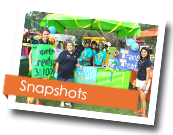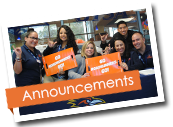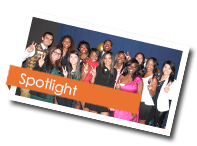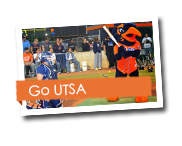Message from the Vice President
Dr. Gage E. Paine
Recently, a student told me it was important for students to know what job they want when they choose a major. I told her I think it is the other way around – find a major you love and then Career Center staff can help you with the job. That may sound picky, but I do believe it is an important difference. Picking a job you want, and may know nothing about, can have the effect of narrowing one's choices rather than opening up the possibilities. It's all about the way you look at it, your perspective, and that informs your decision-making.
Perspective is an interesting concept. If you look in the dictionary you will find a number of definitions. It is both a visual word and an attitudinal one. I think we tend to mix the two versions in our everyday use. We talk about needing a new perspective, meaning we need a new way of considering an issue – sounds visual, but it's also attitude. We may say we need 'fresh eyes' because we know we can get locked into a point of view and it can be hard to change our perspective on the topic – again a mixed use.
 Have you ever looked at a picture of two people and wondered why everyone else was talking about the lovely vase? Similarly, have you ever been in a meeting where everyone else was sure the answer to the problem was 'A' and you couldn't figure out why they didn't know it was clearly '32,000'? Sometimes that's caused by differing knowledge, but it's often a matter of perspective. We all come to each interaction with others or with ideas from our own point of view. It's one reason why we want to engage a variety of people in our meetings and on our teams – to look at problems or projects from different perspectives.
Have you ever looked at a picture of two people and wondered why everyone else was talking about the lovely vase? Similarly, have you ever been in a meeting where everyone else was sure the answer to the problem was 'A' and you couldn't figure out why they didn't know it was clearly '32,000'? Sometimes that's caused by differing knowledge, but it's often a matter of perspective. We all come to each interaction with others or with ideas from our own point of view. It's one reason why we want to engage a variety of people in our meetings and on our teams – to look at problems or projects from different perspectives.
Our individual perspectives are an important contribution to the whole of what we do, so it is important to be as informed as possible about the different ways the topic at hand can be understood. And that means we need to find ways to see things from different angles, from new perspectives, to find ways to pay attention to the details and see the big picture. It means we need to step out of our routines, look up from our desks and understand what's going on around us, learn something new about a topic we find old and uninteresting.
These opening weeks are very hectic and it's hard to think about the big picture, but in some ways this is when shifting our perspective is most important. Can we see past the detail of all those students to the big picture of this one student and her needs right now? Can we understand the next student's perspective and work to address his needs? An important shift for all of us is the ability to shift perspective from the large to a small … and left and right.
So, face or vase, all students or one student, big picture or all the details--the more we can switch back and forth, the more perspectives we can see and the more effective we can be in all we do.
* image from: http://www.scholarpedia.org/article/Figure-ground_perception
(reprinted from Issue I, January 2010)
Best wishes,
Gage












